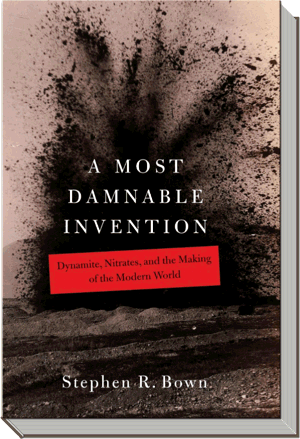A Most Damnable Invention
Dynamite, nitrates and the making of the modern world
Description
A selection of the Scientific American Book Club, the History Book Club and the Quality Paperback Book Club. Shortlisted for the Wilfred Eggleston Award for Non-Fiction and the Canadian Science Writers Association Science in Society Book Award
The dramatic story of two brilliant but controversial men and their world-changing scientific discoveries.
Humanity' desire to harness the destructive capacity of fire is a saga that extends back to the dawn of civilization. But the true age of explosives, when they radically and irrevocably changed the world, began in the 1860s with the remarkable intuition of a sallow Swedish chemist named Alfred Nobel.
His discovery of dynamite made possible the famous industrial mega-projects that transformed the countryside and defined the era, including the St. Gothard rail tunnel through the Alps, the clearing of New York harbor, the Panama Canal and countless others. Dynamite also caused terrible injuries and great loss of life, and in some cases incalculable and irreparable environmental damage. Nobel was one of the richest men in a society rapidly transforming under the power of his invention, but with a troubled conscience, he left his estate to the establishment of the world-famous prizes that bear his name.
As the use of explosives soared and growing populations consumed more food, nations scrambled for the scarce yet vital organic ingredient needed for both. The quest for nitrates takes us from the rural stables and privies of pre-industrial Europe to the monopoly trading plantations in India, to the Atacama desert in South America. Nitrates were as valuable in the 19th century as oil is in the 21st, and were the cause of similar international jockeying and power politics.
The "nitrogen problem" was solved by an enigmatic German scientist named Fritz Haber. His breakthrough not only prolonged the First World War, but became the foundation of the green revolution and the tripling of world population since then. Haber is also known as the "father of gas warfare." When he was awarded a Nobel Prize for his work it sparked international outrage and condemnation.
A Most Damnable Invention is a human tale of scientific obsession, shadowy immorality, historical irony, and a testament to the capacity for human ingenuity during times of war. It is also a cautionary reminder of the cyclical nature of history, showing how the solutions of yesterday eventually give rise to the problems of today.

